Overview


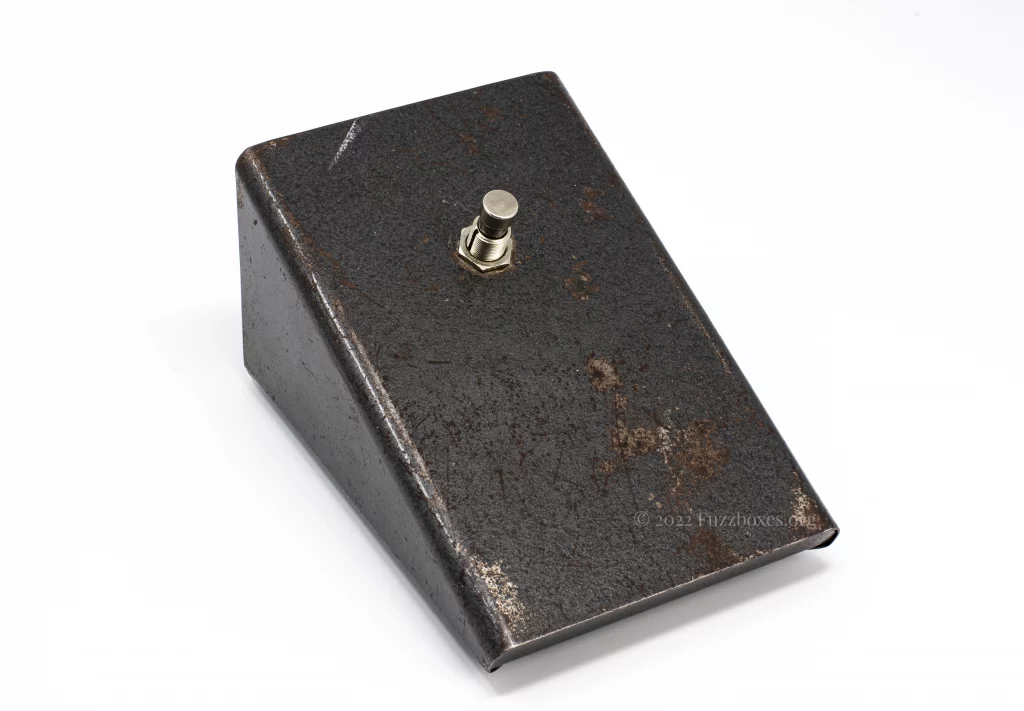
The Buzzaround was developed by Jim Burns’ guitar company in the mid-1960s, and manufactured in relatively small numbers over the course of several years. Burns’ Buzzaround was named in a Burns price list from April 1966, but even the earliest of the known extant pedals were built with potentiometers dating to September 1966, and there is no known picture, or even mention, of the model in the press until winter of 1966. The date codes stamped on the potentiometers of surviving examples of the Buzzaround reveal that the model was still being built by early 1969.
For the longest time, little was known about the origins of the Buzzaround circuit, and the rumours about a connection with famed designer of the Tone Bender, Gary Hurst, have never been supported with any evidence. Eventually, in 2021, it was discovered that the Buzzaround was an unauthorised copy of a much more obscure mid-1960s fuzzbox, called the G. P. Electronics Harmonic Generator.1
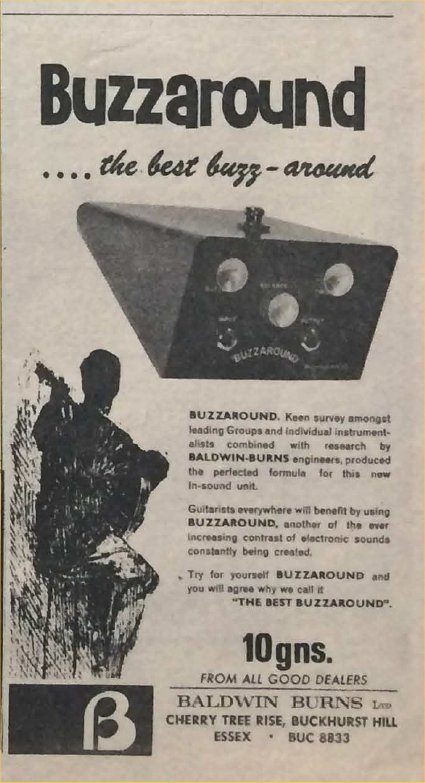

Sola Sound used a circuit for their Tone Bender MKIII that was very likely to have been based on the earlier Buzzaround design, but the Tone Bender MKIII was modified to include a tone control. At some point in the late 1960s, the Italian musical instrument company, Elka, released the Dizzy Tone fuzz pedal, which was also derivative of the Buzzaround.
A single exemplar of a ‘Baldwin’ fuzz box was discovered in the United States, and was believed by a former owner to have been a prototype for an American version of the Buzzaround. This unit runs from a lower supply voltage, but the basic schematic is based on the British model.2
An unusually high number of original Buzzarounds have surfaced in Australia, which suggests that Baldwin-Burns might have had distribution agreements in place to sell them over there, in addition to in the UK.
Tech specs
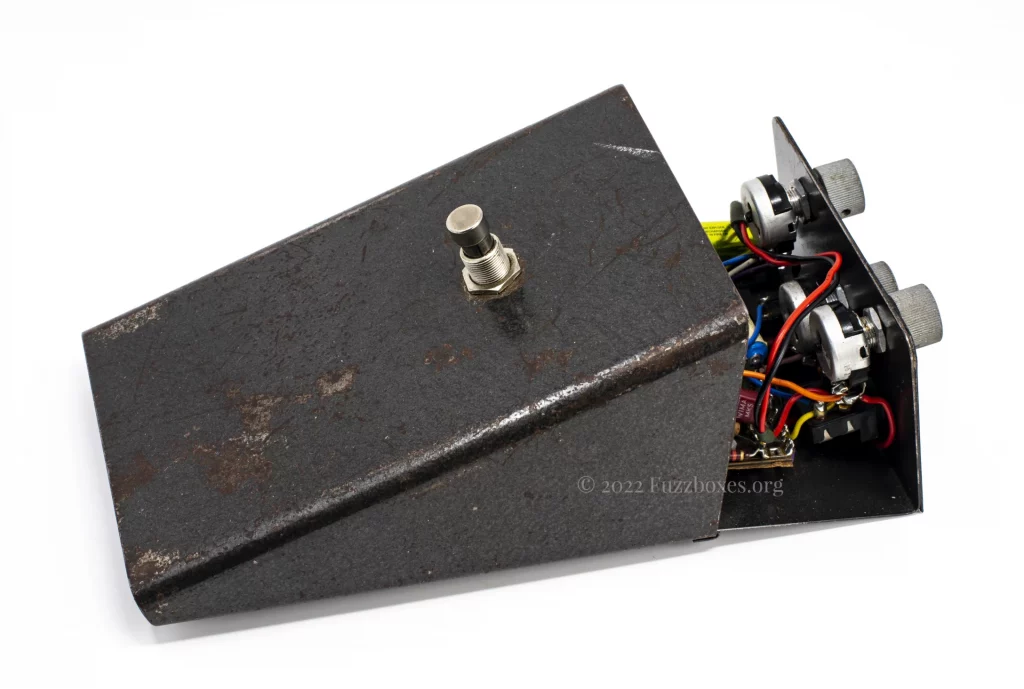
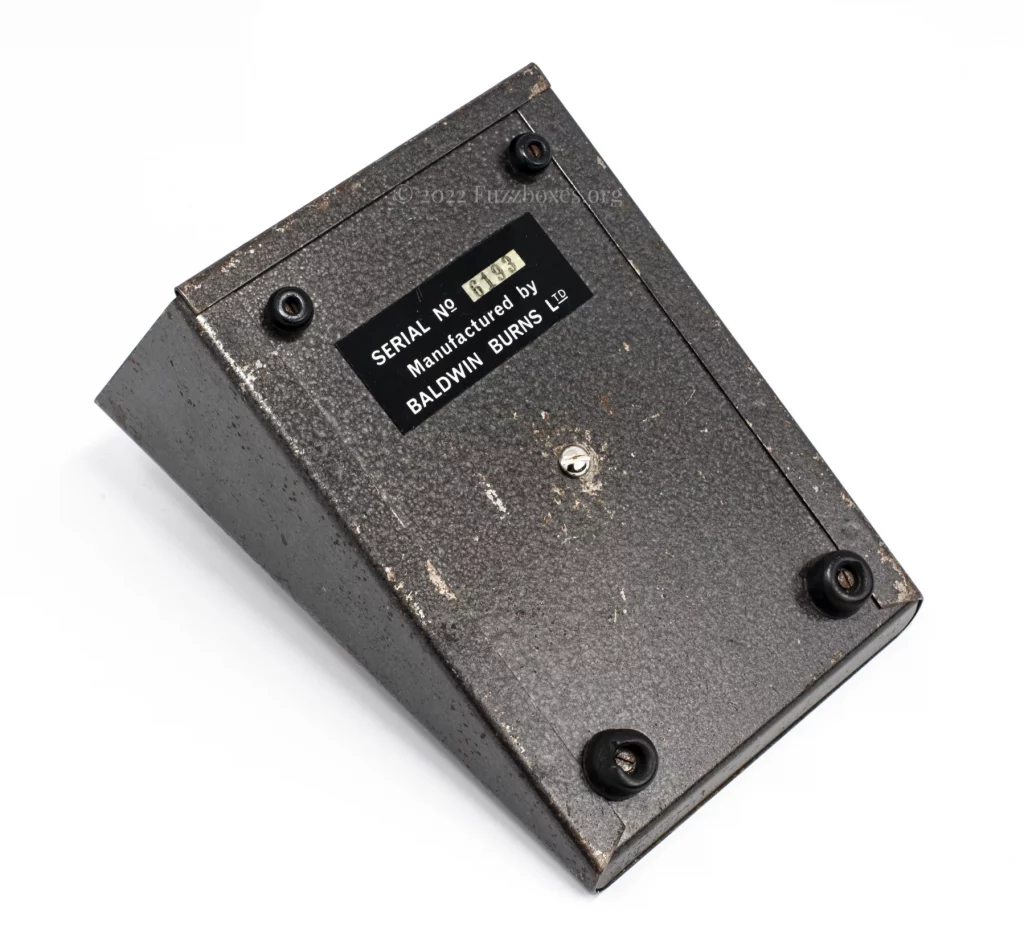
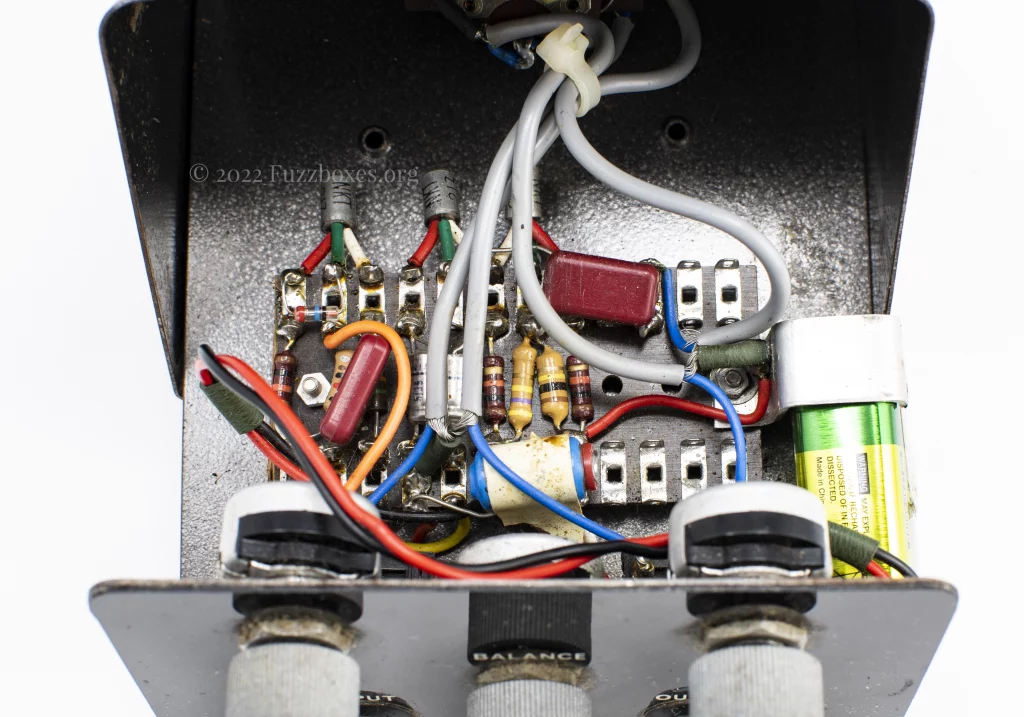
Buzzaround pedals were housed in a folded steel enclosure and came painted in dark grey Hammerite. They featured an electronic circuit built on tag board, with three germanium NKT213 transistors. The way that the three controls on Burns’ Buzzaround interact make for a very flexible instrument, and compared with the much more rudimentary-sounding pedals from the mid-1960s, this one wouldn’t feel too far out of place in a recording session for modern distorted guitars.
Buzzarounds were also fitted with a panel underneath denoting their serial numbers. The known range of serial numbers on surviving Buzzarounds spans from 6134 to 7993, but because identical panels have been found in Burns amplifiers, with similar serial numbers falling within that range, it is impossible to even estimate how many Buzzarounds might have originally been produced.
The front panel for the Buzzaround was designed by Eddie Cross, who was involved in the production of the pickguards on Burns guitars during the 1960s, and who preserved his original technical drawing of the Buzzaround’s control layout (pictured below).
The Burns Buzzaround was reported in the November 1966 issue of Beat Instrumental to have been redesigned with a “special sustain effect”.3 The language used to describe this development has led some people in recent times to believe that there once existed a version of the Buzzaround with only two knobs (presumably missing the ‘sustain’ control). There is, however, no such known surviving example of a ‘two-knob’ Buzzaround, and because the earlier G. P. Harmonic Generator also features three controls, it is unlikely that a more primitive version of the Buzzaround exists.
What is known, however, is that some of the earliest Buzzarounds were built with non-latching footswitches. This means that the user would have to keep their foot down on the pedal in order to ‘sustain’ the fuzz sound, and so it’s quite possible that the reporting in the press of a “fresh” version of the Buzzaround referred to Burns’ decision to begin fitting latching footswitches to their pedals, thereby making it easier for the user to create a sustained fuzz sound.
Notable users
A discussion about the Buzzaround is incomplete without a mention of the band most famously connected with it: King Crimson. Robert Fripp confirms that it was the Buzzaround that he used on the earlier Giles, Giles & Fripp recordings.4 Fripp also refutes the allegation that the Buzzaround was used for his guitar parts on David Bowie’s ‘Heroes’,5 and photos of King Crimson suggest that Fripp had stopped using Buzzaround pedals by the early 1970s, using pedals like Guild’s Foxey Lady for his distorted sounds instead.
According to Tony Arnold, either one or both of Robert Fripp’s Buzzarounds were eventually rehoused into a rackmount unit. The remains of the enclosure of one of Fripp’s Buzzarounds still survives, and is pictured below. (Photo credit: S. Park)
Other groups who were photographed using the Burns Buzzaround include the Troggs and the Soft Machine.
Share your fuzz!
I welcome any comments, feedback, queries & corrections in relation to the Fuzzboxes.org project. Please get in touch via this contact form (or on the ‘contact‘ page).
Much of our understanding of the development of 1960s fuzz boxes comes from analysis of surviving pedals themselves, and so photos of pedals belonging to readers are particularly useful in furthering this research.
If you would like to contribute pictures of 1960s-era guitar effects to Fuzzboxes.org, then feel free to send in any pictures via the uploader below. Photos are greatly appreciated, and any submissions are not published on this website without advance agreement with the contributor.
Thanks to B. Lovegrove & the Burns Guitars group on Facebook
- J. Wills (personal communication, 11th November 2021)
- https://stompboxes.co.uk/forum/viewtopic.php?f=6&t=15154
- Beat Instrumental, November 1966, p. 24
- DGMLive, Robert Fripp’s Diary, 15/10/2010 [https://www.dgmlive.com/diaries/Robert%20Fripp/bredonborough-an-uninterrupted-nights-sleep-210916]
- DGMLive, Robert Fripp’s Diary, 14/04/2014 [https://www.dgmlive.com/diaries/Robert%20Fripp/hotel-quite-acceptable-seattle-rising-3-210916]
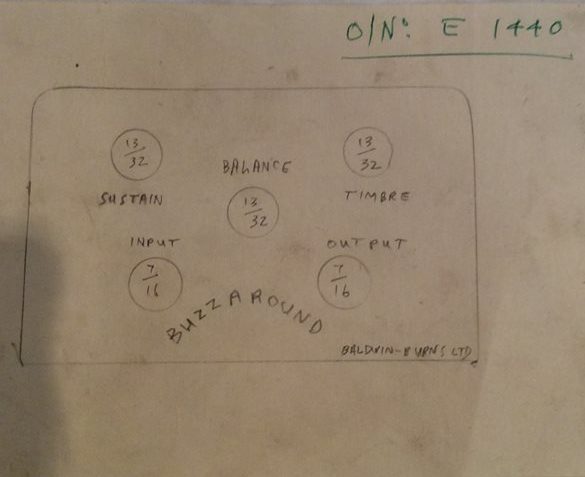
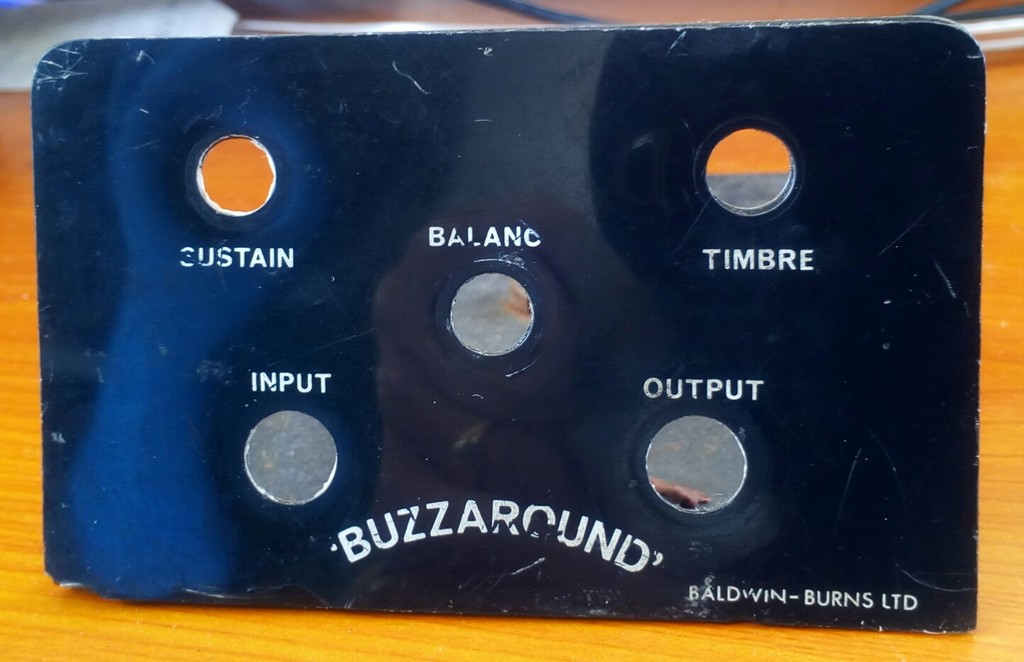

About time you open that brain of yours! Invaluable content.
Hi , I own a Burns Buzzaround serial No-6188 . I’m really interested in vintage effects pedals
both 60’s and 70’s and have managed to collect the odd piece over the years . Cheers James
It’s so sad and indicative of the uncorrectible wrongness of the internet that the #1 (and usually only) thing people “know” about the Buzzaround — that Fripp used one on “Heroes” — is completely and demonstrably untrue, and yet has still propagated to every corner of the online gear world. Thank you for trying to debunk the myth. For people wanting to *actually* hear Fripp use the Buzzaround unequivocably, there’s probably no better example than the endlessly-sustained lines of “Prince Rupert’s Lament” on Lizard. Runners up would include GG&F’s “Erudite Eyes,” his session work on the Shy Limbs’ “Love,” and of course the original ITCOTCK “Schizoid Man” solo….